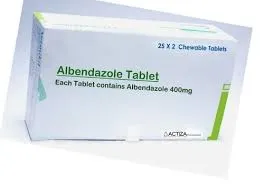- Afrikaans
- Albanian
- Amharic
- Arabic
- Armenian
- Azerbaijani
- Basque
- Belarusian
- Bengali
- Bosnian
- Bulgarian
- Catalan
- Cebuano
- Corsican
- Croatian
- Czech
- Danish
- Dutch
- English
- Esperanto
- Estonian
- Finnish
- French
- Frisian
- Galician
- Georgian
- German
- Greek
- Gujarati
- Haitian Creole
- hausa
- hawaiian
- Hebrew
- Hindi
- Miao
- Hungarian
- Icelandic
- igbo
- Indonesian
- irish
- Italian
- Japanese
- Javanese
- Kannada
- kazakh
- Khmer
- Rwandese
- Korean
- Kurdish
- Kyrgyz
- Lao
- Latin
- Latvian
- Lithuanian
- Luxembourgish
- Macedonian
- Malgashi
- Malay
- Malayalam
- Maltese
- Maori
- Marathi
- Mongolian
- Myanmar
- Nepali
- Norwegian
- Norwegian
- Occitan
- Pashto
- Persian
- Polish
- Portuguese
- Punjabi
- Romanian
- Russian
- Samoan
- Scottish Gaelic
- Serbian
- Sesotho
- Shona
- Sindhi
- Sinhala
- Slovak
- Slovenian
- Somali
- Spanish
- Sundanese
- Swahili
- Swedish
- Tagalog
- Tajik
- Tamil
- Tatar
- Telugu
- Thai
- Turkish
- Turkmen
- Ukrainian
- Urdu
- Uighur
- Uzbek
- Vietnamese
- Welsh
- Bantu
- Yiddish
- Yoruba
- Zulu
تشرینی دووەم . 21, 2024 23:31 Back to list
2 glutaraldehyde solution preparation
Preparation of a 2% Glutaraldehyde Solution
Glutaraldehyde is a potent sterilizing and disinfecting agent widely used in laboratories, hospitals, and industrial settings. Its high efficacy against a wide range of microorganisms makes it a preferred choice for various applications. One of the most common preparations of glutaraldehyde is the 2% solution, which is utilized for tissue fixation in microscopy, sterilization of medical instruments, and preservation of biological specimens. This article outlines the preparation process of a 2% glutaraldehyde solution, emphasizing safety precautions, materials needed, and step-by-step instructions.
Materials Required
1. Glutaraldehyde A commercially available solution typically found in concentrations ranging from 25% to 50%. 2. Distilled Water Used for diluting glutaraldehyde to achieve the desired concentration. 3. Measuring Cylinder For accurate measurement of liquids. 4. Pipettes For transferring small volumes, if necessary. 5. Beakers For mixing the solution. 6. Stirring Rod or Magnetic Stirrer To ensure thorough mixing. 7. Personal Protective Equipment (PPE) Including gloves, lab coat, and goggles. 8. pH Meter or pH Strips Optional, to check the pH of the solution.
Safety Precautions
Glutaraldehyde is classified as a hazardous chemical, and appropriate precautions must be taken during its use. It is essential to work in a well-ventilated area, preferably under a fume hood, to avoid inhalation of vapors. Wearing PPE is crucial to prevent skin and eye contact. If the solution comes into contact with skin or eyes, it should be rinsed thoroughly with water, and medical advice should be sought. Additionally, it is vital to handle glutaraldehyde with care and dispose of any waste according to local regulations.
Step-by-Step Preparation
1. Calculating the Required Volume To prepare a 2% glutaraldehyde solution, the required amount of glutaraldehyde can be calculated using the formula \[ \text{Volume of 25% glutaraldehyde} = \frac{\text{Desired final volume} \times 2\%}{25\%} \] For example, for a final volume of 100 mL \[ \text{Volume of 25% glutaraldehyde} = \frac{100 \, \text{mL} \times 2}{25} = 8 \, \text{mL} \]
2 glutaraldehyde solution preparation

2. Measurement Measure 8 mL of the 25% glutaraldehyde solution using a measuring cylinder or pipette.
3. Dilution Transfer the measured glutaraldehyde into a clean beaker. Add distilled water to the beaker to bring the total volume to 100 mL. For this example, you would add 92 mL of distilled water.
4. Mixing Use a stirring rod or a magnetic stirrer to thoroughly mix the solution. Ensure that the glutaraldehyde is evenly distributed throughout the water.
5. pH Adjustment (Optional) While a 2% glutaraldehyde solution does not generally require pH adjustment, if the application necessitates a specific pH, it may be appropriate to measure and adjust using appropriate buffers.
6. Storage Transfer the prepared solution to a labeled, dark glass container to minimize exposure to light, which can degrade glutaraldehyde. Store it in a cool, dry place away from incompatible substances.
Conclusion
Preparing a 2% glutaraldehyde solution is a straightforward process that is critical for various laboratory and medical applications. By following the outlined steps and observing safety precautions, users can effectively utilize glutaraldehyde while minimizing risks to health and safety. Always remember to store and handle the solution in compliance with regulatory guidelines. With proper preparation and use, glutaraldehyde can serve as an invaluable tool in biological research and clinical practice.
-
Guide to Oxytetracycline Injection
NewsMar.27,2025
-
Guide to Colistin Sulphate
NewsMar.27,2025
-
Gentamicin Sulfate: Uses, Price, And Key Information
NewsMar.27,2025
-
Enrofloxacin Injection: Uses, Price, And Supplier Information
NewsMar.27,2025
-
Dexamethasone Sodium Phosphate Injection: Uses, Price, And Key Information
NewsMar.27,2025
-
Albendazole Tablet: Uses, Dosage, Cost, And Key Information
NewsMar.27,2025













